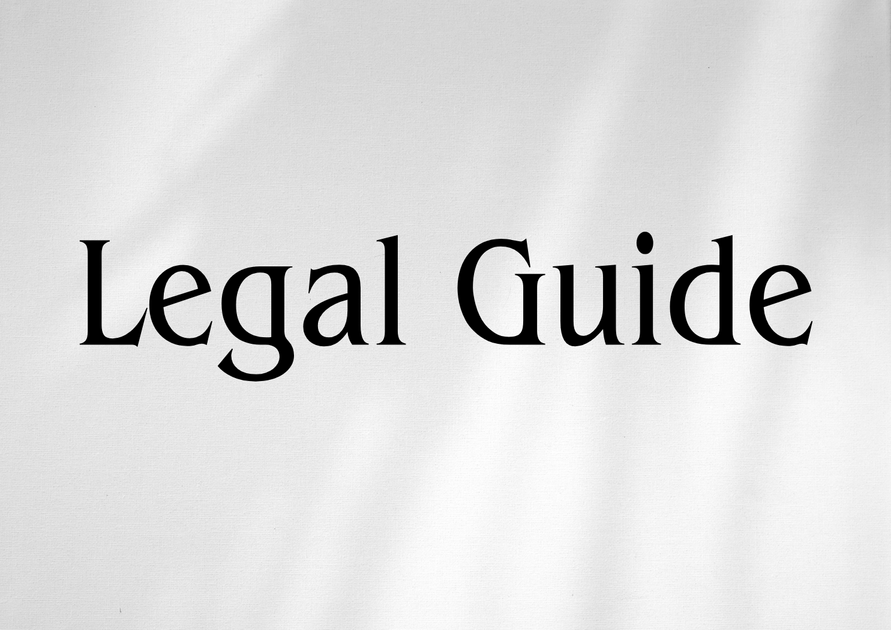Introduction
In recent years, the aviation industry in Saudi Arabia has undergone significant transformation, driven by the nation’s ambitious Vision 2030 plan and a rapidly evolving regulatory framework. For businesses, investors, and executives across the UAE and the wider GCC region, understanding the legal complexities of Saudi aviation safety regulations has never been more essential. Keeping pace with these updates is vital not only to mitigate risks but also to capitalize on emerging opportunities in one of the Middle East’s fastest-growing sectors.
This expert advisory provides a deep dive into the current landscape of Saudi Arabia’s aviation safety regulations, offering practical guidance on compliance, risk mitigation strategies, and comparative insights for UAE-based stakeholders. It draws on official Saudi regulations, recent royal decrees, and compliance precedents, referencing the Saudi General Authority of Civil Aviation (GACA) and aligning with international standards, such as those established by the International Civil Aviation Organization (ICAO).
With UAE companies increasingly involved in Saudi infrastructure, logistics, and tech-driven aviation projects, this article aims to equip legal and business leaders with actionable intelligence for 2025 and beyond. We also highlight how these regulatory shifts compare to UAE law, referencing sources such as the UAE Federal Legal Gazette and strategic directives from the UAE Ministry of Justice.
Table of Contents
- Overview of Saudi Aviation Safety Law
- Regulatory Framework and Key Authorities
- Key Provisions of GACA Safety Regulations
- Compliance Strategies: Best Practices for Organizations
- Comparative Analysis: Saudi and UAE Aviation Safety Laws
- Case Studies and Hypotheticals
- Risk Mitigation and Penalties for Non-Compliance
- Future Trends and Recommendations
- Conclusion and Strategic Advisory Notes
Overview of Saudi Aviation Safety Law
The Evolution of Saudi Aviation Legislation
Saudi Arabia’s aviation safety regulatory landscape is primarily governed by the Civil Aviation Law (Royal Decree No. M/44 dated 18/07/1426H) and subsequent amendments enacted by the General Authority of Civil Aviation (GACA). In the wake of global safety incidents and growing traffic, GACA has revised its regulations to harmonize with international norms, particularly those of the ICAO Annexes. The main regulatory texts include:
- Civil Aviation Law (M/44/1426H)
- GACA Safety Management System (SMS) Regulations
- Saudi Civil Aviation Regulations (CARs), with specific reference to CAR Part 145 (maintenance organisations), Part 21 (certification), and Part 61 (licensing)
- Aeronautical Circulars and Directives periodically issued by GACA
Legal Scope and Applicability
These regulations apply to all Saudi-registered aircraft, operators, airports, and maintenance organisations, as well as foreign airlines operating within Saudi airspace. UAE-based entities collaborating with, or investing in, Saudi aviation projects must actively ensure compliance, even if operating cross-border, to avoid potential regulatory breaches or forfeiture of Saudi market access.
Regulatory Framework and Key Authorities
Role of GACA and Ministerial Oversight
The General Authority of Civil Aviation (GACA) is the principal regulatory and enforcement body responsible for aviation safety in Saudi Arabia. GACA operates under the jurisdiction of the Ministry of Transport and ensures legislative compliance, certification, accident investigation, and enforcement of safety protocols. Key GACA responsibilities include:
- Development and issuance of national aviation policy
- Supervision of airport safety and security standards
- Certification and oversight of airlines and maintenance providers
- Collaboration with international safety agencies
Key Legal Instruments
| Legal Instrument | Issuing Authority | Year Enacted | Scope |
|---|---|---|---|
| Civil Aviation Law (M/44/1426H) | Saudi Royal Decree | 2005 | General regulation of civil aviation |
| GACA SMS Regulations | GACA | 2015 (Amended 2022) |
Mandatory safety management systems |
| CAR Part 145 | GACA | 2017 | Maintenance organisation requirements |
| Aeronautical Circulars | GACA | Ongoing | Operational guidance |
Key Provisions of GACA Safety Regulations
1. Mandatory Safety Management Systems (SMS)
Since the 2022 amendment to the GACA SMS Regulations, all aviation operators (airlines, airports, ground handling agents, and maintenance providers) are required to implement and demonstrate robust SMS protocols. These protocols must:
- Identify hazards and assess operational risks
- Establish proactive reporting and incident investigation systems
- Ensure comprehensive training for safety officers and crews
- Conduct regular internal audits and compliance reviews
2. Certification and Licensing Requirements
GACA mandates that:
- All organisations obtain an Air Operator Certificate (AOC) for commercial or charter operations
- Maintenance providers adhere strictly to CAR Part 145 standards, including Periodic Surveillance Audits by GACA inspectors
- Pilots, air traffic controllers, and technical staff hold valid GACA licenses
3. Accident Reporting and Investigation
Operators are under a legal obligation to report any incidents or accidents within 72 hours. Failure to do so can result in substantial penalties and revocation of operational licenses. GACA, guided by ICAO Annex 13, conducts independent investigations and publishes findings for sector-wide learning.
Compliance Strategies: Best Practices for Organizations
Implementation of SMS: A Stepwise Approach
For UAE-based corporations looking to expand or partner in Saudi aviation, integration of Saudi-compliant SMS offers an immediate advantage in securing regulatory approvals. The following steps are essential:
- Undertake a gap analysis against GACA’s SMS requirements
- Develop and document safety processes and procedures
- Provide targeted staff training, including scenario-based emergency response drills
- Initiate a confidential hazard reporting program
- Set up internal audit and review mechanisms
Suggestion for Visual: A compliance checklist table outlining the steps and documentation required for GACA SMS approval.
Collaborative Engagement with Regulators
Organisations must foster regular liaison with GACA auditors—attendance at GACA workshops and timely submission of documentation significantly reduces regulatory friction and accelerates project timelines. It is advisable to maintain a local legal representative or certified agent to handle day-to-day compliance matters.
Data Protection and Cross-Jurisdictional Considerations
When handling safety data (such as incident reports or crew records), UAE entities must ensure compliance with both Saudi data protection laws and UAE Federal Decree Law No. (45) of 2021 on Data Protection. This includes robust encryption, regulated data sharing, and “privacy by design” philosophies.
Comparative Analysis: Saudi and UAE Aviation Safety Laws
Legislative Landscape Comparison (2025)
| Criteria | Saudi Arabia (GACA) | UAE (GCAA & Federal Law) |
|---|---|---|
| Principal Authority | GACA | General Civil Aviation Authority (GCAA) |
| Latest Amendments | SMS Regulations Amended 2022 | UAE Civil Aviation Law 2025 Updates |
| Mandatory SMS | Yes, by law | Yes, by law |
| Pilot Licensing | GACA License (ICAO-based) | GCAA License (ICAO-based) |
| Data Protection Regime | Saudi Data Protection Law 2022 | UAE Federal Decree Law No. 45/2021 |
| Foreign Ownership Restrictions | Partial, case-by-case approvals | Relaxed under investment laws |
| Incident Reporting Deadline | 72 hours | 48 hours |
| Primary Penalties | Severe fines, license suspension | Fines, sanctions, operational bans |
Professional Insight: While both jurisdictions adhere to ICAO requirements, the UAE’s recent updates to federal aviation law are positioning it as a leader in fast-track licensing and digital compliance regimes. In contrast, Saudi Arabia imposes stricter controls on foreign operator participation, making thorough due diligence essential for cross-border collaborations.
Case Studies and Hypotheticals
Case Study 1: UAE Maintenance Provider Entering Saudi Market
A UAE-based maintenance company seeks a Saudi CAR Part 145 certificate to undertake MRO (maintenance, repair, and overhaul) services at a new Riyadh facility. To comply, the company must:
- Submit a comprehensive compliance manual aligned with GACA standards
- Employ at least two Saudi-national safety officers as per Saudization requirements
- Integrate dual reporting platforms to satisfy both Saudi and UAE data protocols
Risk: Non-compliance can result in the facility’s operational license being suspended for up to one year, alongside fines of up to SAR 1 million.
Case Study 2: Incident Reporting and Legal Exposure
In a hypothetical scenario, a UAE-chartered aircraft experiences a ground collision at a Saudi airport. The UAE operator is legally obligated to:
- Report the incident to GACA within 72 hours
- Submit forensic evidence and permit ready access to GACA investigators
- Implement post-incident training to rectify identified safety gaps
Failure to cooperate fully exposes the operator to cross-border sanctions, complicating future landing rights under both Saudi and UAE law.
Risk Mitigation and Penalties for Non-Compliance
Common Compliance Risks
- Unqualified staff leading to invalidated certifications
- Poor documentation and audit trails
- Delays in mandatory reporting of safety incidents
- Failure to localize compliance for Saudi-specific requirements
Penalty Structure: Saudi Arabia vs UAE
| Infringement Type | Saudi Arabia (Typical Penalty) | UAE (Typical Penalty) |
|---|---|---|
| SMS Non-Implementation | License suspension, up to SAR 1M fine | License suspension, AED 500K fine |
| Lapse in Incident Reporting | Operational ban, monetary fines | Monetary fines, GCAA audit |
| Use of Unlicensed Personnel | Immediate grounding, criminal action | Warnings, suspension, potential prosecution |
Suggestion for Visual: Penalty comparison chart for key compliance breaches.
Mitigation Strategies
- Designate a compliance officer versed in GACA and UAE regulatory requirements
- Utilize legal technology platforms for real-time compliance monitoring
- Schedule regular external audits
- Maintain dual-language compliance documentation (Arabic/English)
- Engage local counsel to manage regulatory submissions and appeals
Future Trends and Recommendations
Legal and Regulatory Horizons for 2025 and Beyond
Saudi Arabia is signaling further aviation sector liberalization, with anticipated amendments to foreign investment restrictions and increased digitalization of compliance submissions. Looking ahead, key developments likely to affect both Saudi and UAE operators include:
- Growth in e-Aviation (including eVTOL and drone regulations)
- Stricter carbon emission standards in line with global ESG trends
- Mandatory cyber-resilience protocols for airport and airline IT systems
Recommendation: UAE stakeholders should proactively monitor changes in GACA Circulars while aligning internal audits with the new ESG-compliant regulatory frameworks emerging in both countries.
Conclusion and Strategic Advisory Notes
Saudi Arabia’s overhaul of its aviation safety regulations reflects a commitment to fairness, transparency, and international best practices. For UAE legal and business communities, the emerging landscape presents both competitive opportunities and heightened compliance risks. By adopting best-in-class compliance frameworks, leveraging local expertise, and investing in technology-driven legal processes, organizations can future-proof their aviation interests—whether in Saudi Arabia, the UAE, or elsewhere in the GCC.
The regulatory convergence between Saudi and UAE aviation—especially following the “UAE Civil Aviation Law 2025 updates”—means organizations operating regionally must invest in harmonized compliance programs. Anticipating and adapting to regulatory shifts, supported by proactive legal consultancy, will remain the key to sustainable success.
For individualized legal advice regarding Saudi or UAE aviation compliance, contact our expert team of aviation law consultants and stay ahead of the curve.



